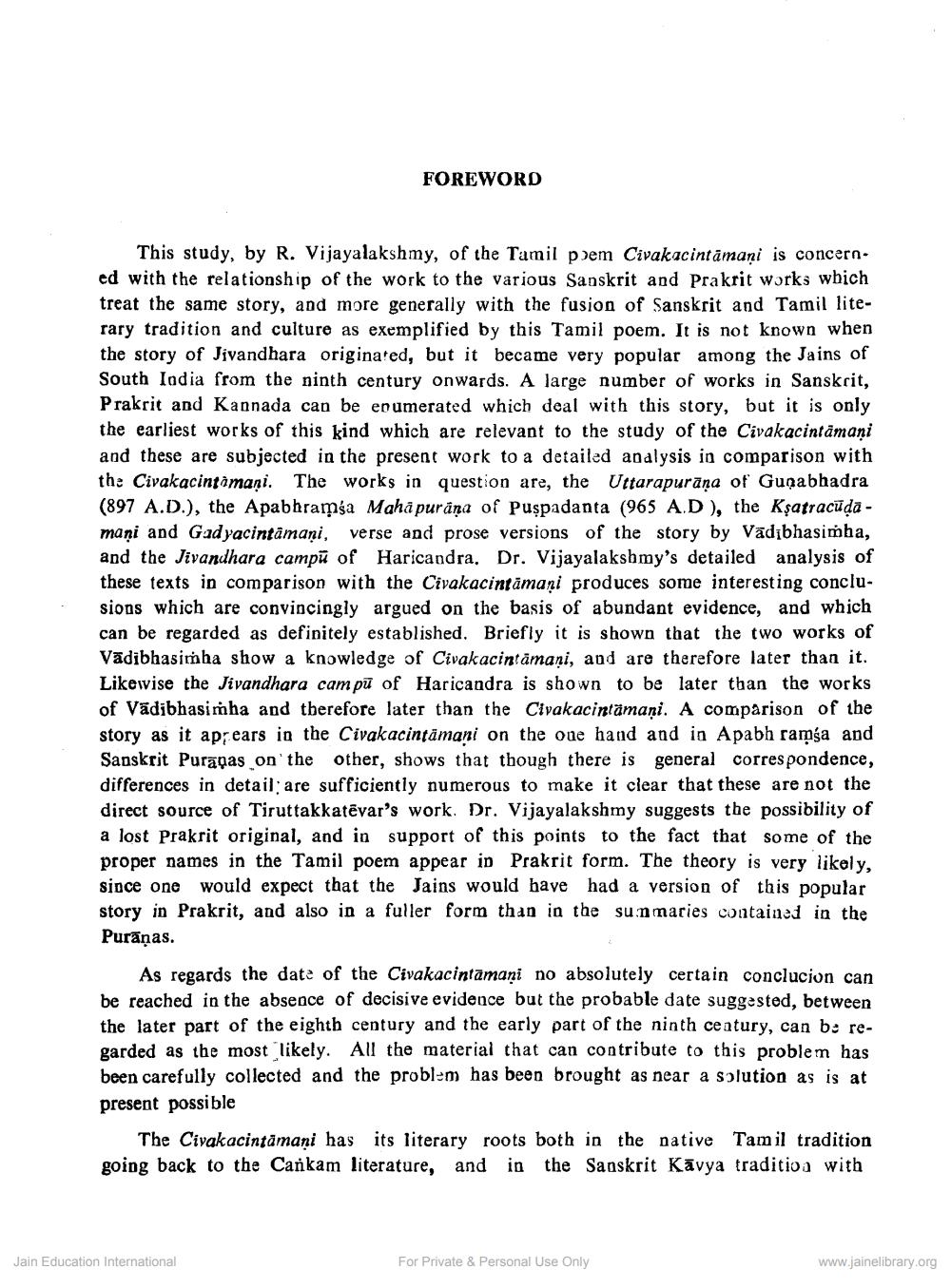________________
FOREWORD
This study, by R. Vijayalakshmy, of the Tamil poem Civakacintāmaņi is concern. ed with the relationship of the work to the various Sanskrit and Prakrit works which treat the same story, and more generally with the fusion of Sanskrit and Tamil literary tradition and culture as exemplified by this Tamil poem. It is not known when the story of Jivandhara originated, but it became very popular among the Jains of South India from the ninth century onwards. A large number of works in Sanskrit, Prakrit and Kannada can be enumerated which deal with this story, but it is only the earliest works of this kind which are relevant to the study of the Civakacintamani and these are subjected in the present work to a detailed analysis in comparison with the Civakacintamani. The works in question are, the Uttarapurāņa of Gumabhadra (897 A.D.), the Apabhramsa Mahā purāņa of Puşpadanta (965 A.D), the Kșatracūda - mani and Gadyacintamani, verse and prose versions of the story by Vadıbhasimha, and the Jivandhara campū of Haricandra. Dr. Vijayalaksbmy's detailed analysis of these texts in comparison with the Civakacintamani produces some interesting conclusions which are convincingly argued on the basis of abundant evidence, and which can be regarded as definitely established. Briefly it is shown that the two works of Vādibhasimha show a knowledge of Civakacintamani, and are therefore later than it. Likewise the Jivandhara cam pū of Haricandra is shown to be later than the works of Vădibhasimha and therefore later than the Civakacintamaņi. A comparison of the story as it appears in the Civakacintamani on the one hand and in Apabh ramsa and Sanskrit Purāpas on the other, shows that though there is general correspondence, differences in detail: are sufficiently numerous to make it clear that these are not the direct source of Tiruttakkatēvar's work. Dr. Vijayalakshmy suggests the possibility of a lost Prakrit original, and in support of this points to the fact that some of the proper names in the Tamil poem appear in Prakrit form. The theory is very likely, since one would expect that the Jains would have had a version of this popular story in Prakrit, and also in a fuller form than in the sunmaries contained in the Purāṇas.
As regards the date of the Civakacintāmaņi no absolutely certain conclucion can be reached in the absence of decisive evidence but the probable date suggested, between the later part of the eighth century and the early part of the ninth ceatury, can be regarded as the most likely. All the material that can contribute to this problem has been carefully collected and the problem has been brought as near a solution as is at present possible
The Civakacintamani has its literary roots both in the native Tamil tradition going back to the Cankam literature, and in the Sanskrit Kāvya traditioa with
Jain Education International
For Private & Personal Use Only
www.jainelibrary.org




